1. Kuwaiti Dinar (KWD)
- Country of issuance: Kuwait
- Currency code: KWD
- Currency conversion: 1 KWD = 3.26 USD
Crowned the king of currencies, the Kuwaiti dinar (KWD) reigns supreme as the world’s strongest, boasting a hefty exchange rate that dwarfs most rivals. Backed by Kuwait’s gushing oil wealth and a rock-steady economy, this desert diamond enjoys immense value, reflecting the nation’s prosperity and financial prowess. From opulent skyscrapers to luxurious bazaars, every KWD whispers a story of stability and economic might, showcasing a currency built on a foundation of black gold and astute stewardship.
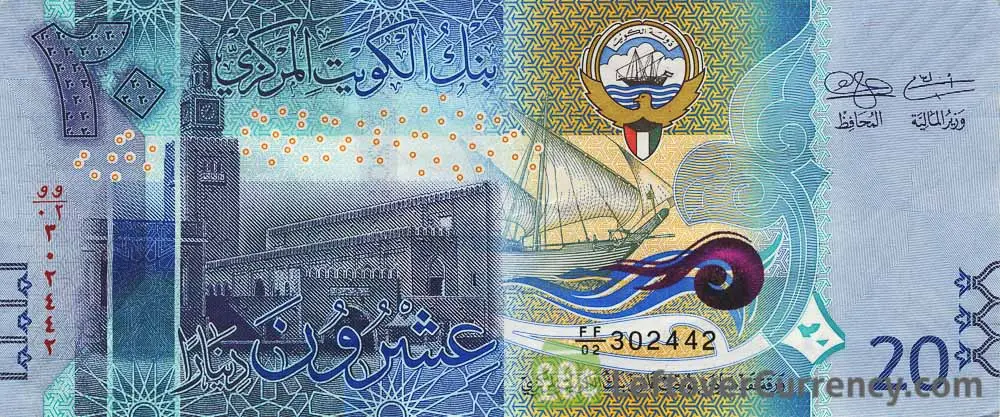
Also, read: Top 10 Largest Stock Exchanges in the World
2. Bahraini Dinar (BHD)
- Country of issuance: Bahrain
- Currency code: BHD
- Currency conversion: 1 BHD = 2.65 USD
Sitting proudly as the second strongest currency in the world, the Bahraini dinar (BHD) boasts a story as rich as the golden sands of its namesake kingdom. Its strength stems from the lifeblood of Bahrain’s economy—oil. The vast reserves fuel a stable and prosperous nation, reflected in the BHD’s unwavering exchange rate against the greenback (1 BHD = 2.65 USD).
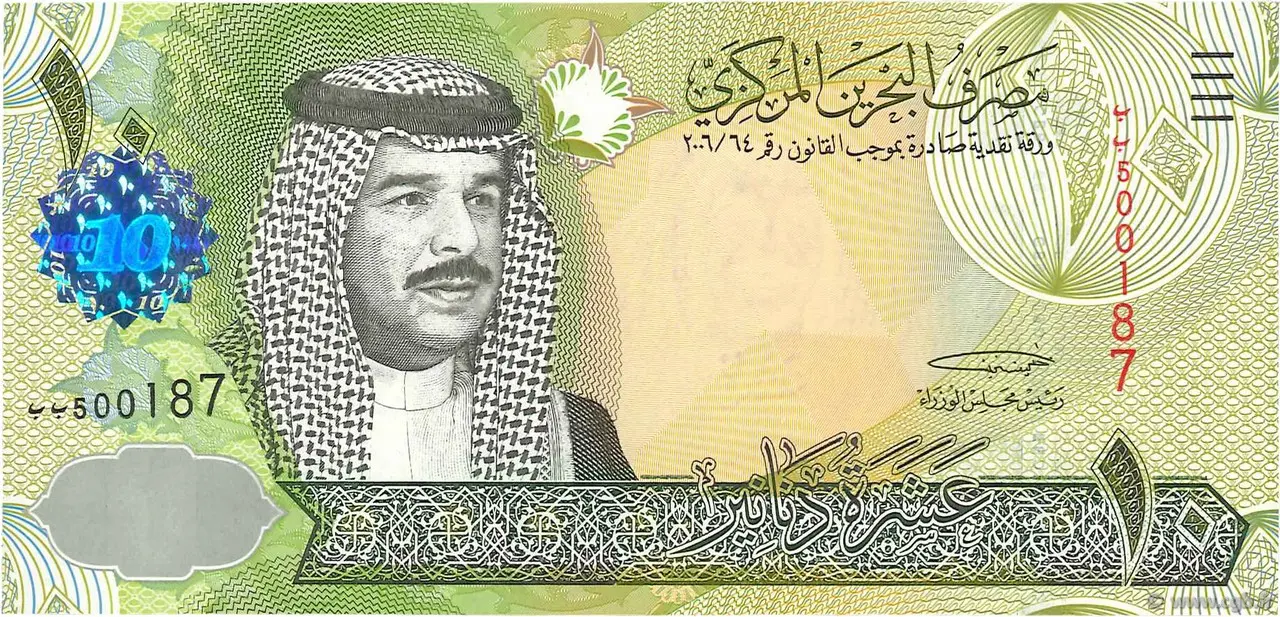
But the BHD’s story isn’t just painted in black gold. Tourism plays an increasingly vital role, with sun-seekers flocking to Bahrain’s pristine beaches and vibrant coral reefs. The currency’s stability makes it a reliable travel companion, ensuring a hassle-free vacation experience.
3. Omani Rial (OMR)
- Country of issuance: Oman
- Currency code: OMR
- Currency conversion: 1 OMR = 2.60 USD
Standing tall as the world’s third-most valuable currency, the Omani Rial (OMR) boasts a regal bearing befitting its namesake, Sultan Haitham bin Tarik. Pegged to the US dollar since 1986, 1 OMR fetches a cool 2.60 USD, a testament to Oman’s economic stability fueled by vast oil reserves. Tourism, manufacturing, and a strategic location on the Arabian Peninsula further bolster the Rial’s strength.
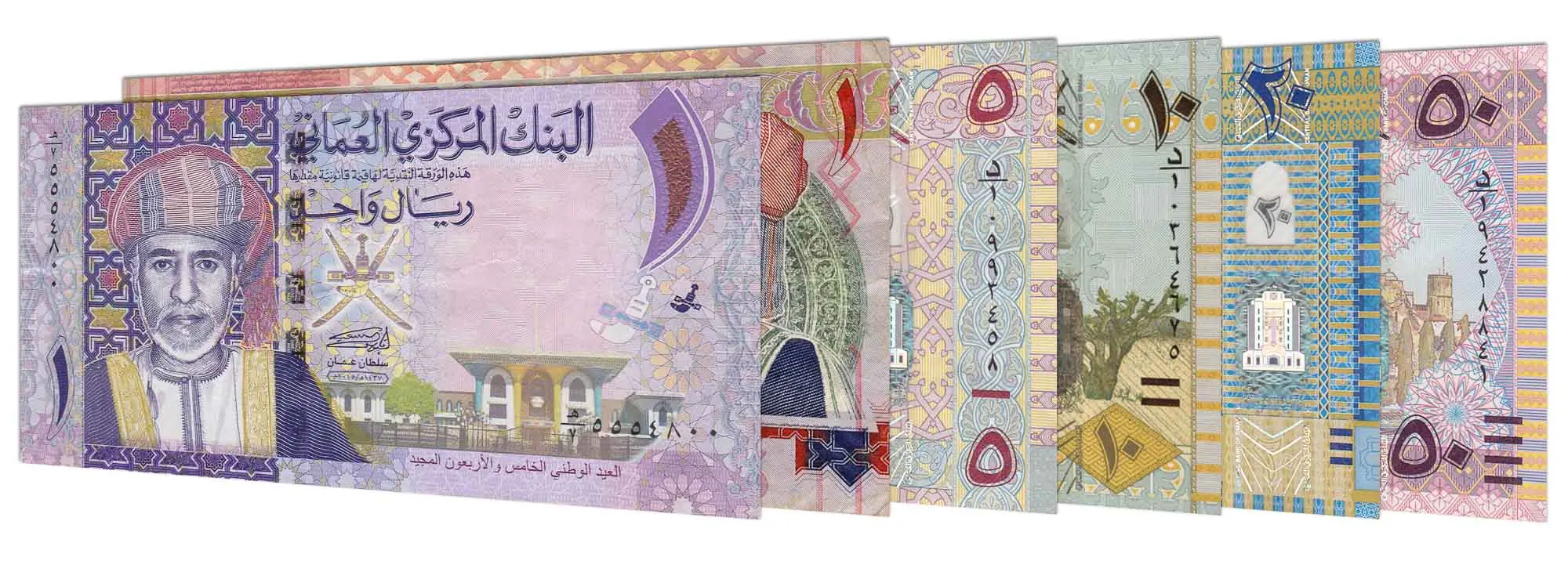
Beyond its financial might, the Rial’s beauty shines through its intricate designs and vibrant colors, each note adorned with frankincense trees, camels, and the iconic Sultan Qaboos Grand Mosque. So, whether you’re a currency enthusiast or an Omanophile, the Omani Rial is a worthy object of admiration and a symbol of a nation’s prosperity and cultural pride.
4. Jordanian Dinar (JOD)
- Country of issuance: Jordan
- Currency code: JOD
- Currency conversion: 1 JOD = 1.41 USD
The Jordanian Dinar is the fourth strongest currency in the world, with 1 JOD being worth approximately 1.41 USD. Jordan’s economy is less reliant on oil than the other countries on this list, but it benefits from its stable political environment and its strategic location at the crossroads of Asia, Africa, and Europe.
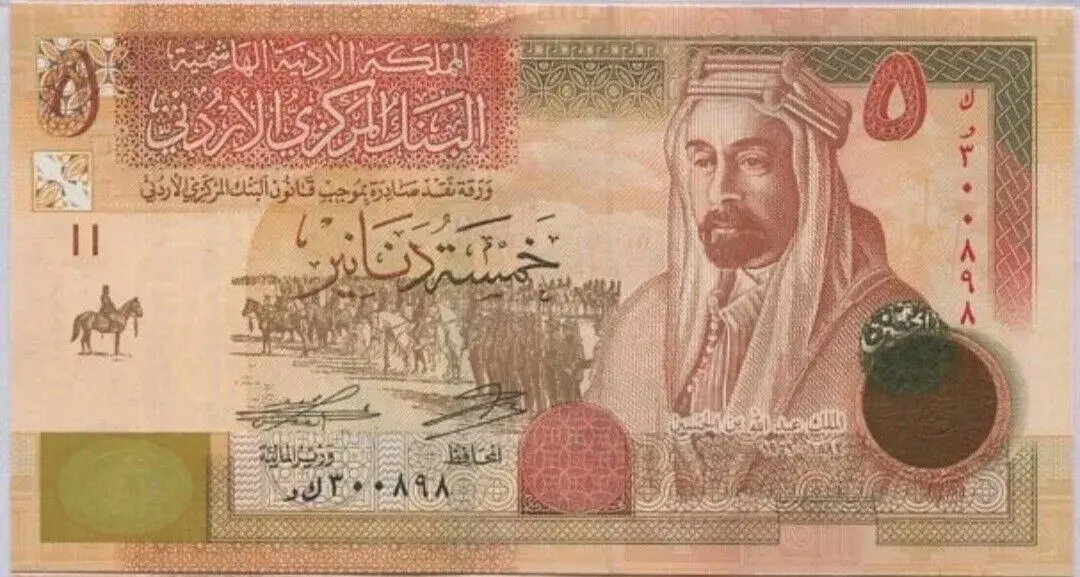
Also, read: 10 Best Credit Cards to Rebuild Bad Credit: Unlock Your Financial Freedom
The Jordanian Dinar, punching above its weight at number four on the global currency podium, defies expectations. Its oil-rich neighbors, Jordan’s strength lies in stability, tourism, and its strategic location. Pegged to the US dollar for over two decades, the dinar boasts a rock-solid reputation, attracting foreign investment and fostering confidence. While not as flashy as its top competitors, the Jordanian dinar is a quietly powerful player, proving that economic might can come in diverse forms.
5. British Pound (GBP)
- Country of issuance: Cayman Islands
- Currency code: KYD
- Currency conversion: 1 KYD = 1.21 USD
The British Pound is the fifth strongest currency in the world, with 1 GBP being worth approximately 1.23 USD. The UK’s economy is one of the largest in the world, and the pound is a major reserve currency.
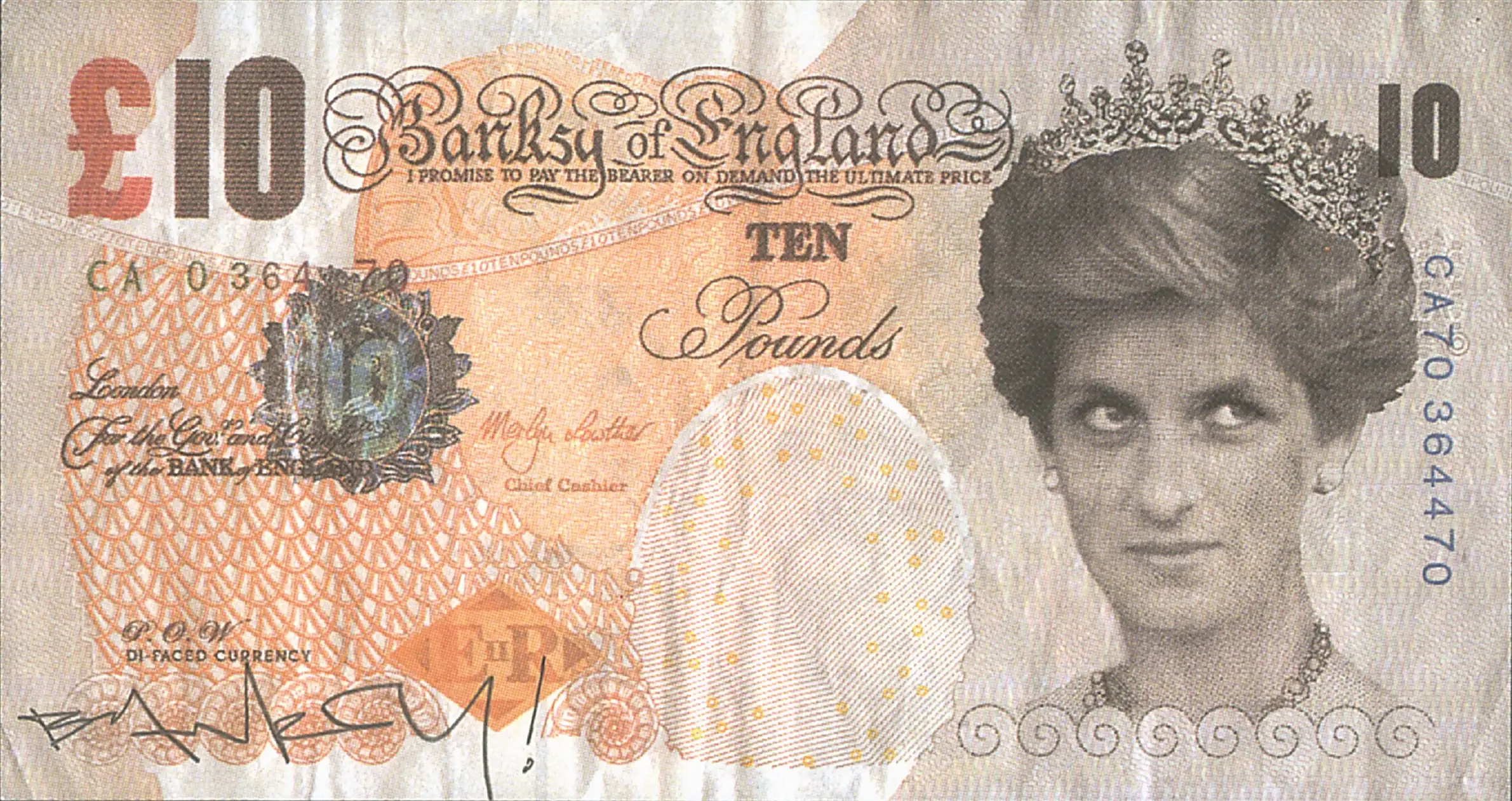
The British Pound stands tall as a testament to the UK’s economic might. Backed by a diverse and substantial economy, a stable political environment, and its historical role as a major reserve currency, the pound remains a global player. Despite Brexit uncertainties, its enduring strength reflects the UK’s continued influence in international trade and finance, showcasing its resilience and adaptability in the ever-shifting landscape of global currencies.
6. Cayman Islands Dollar (KYD)
- Country of issuance: United Kingdom
- Currency code: GBP
- Currency conversion: 1 GBP = 1.21 USD
The Cayman Islands dollar is the sixth strongest currency in the world, with 1 KYD being worth approximately 1.22 USD. The Cayman Islands are a popular offshore financial center, and their currency is pegged to the US dollar.

Sun-kissed beaches and luxury yachts may paint the picture of the Cayman Islands, but behind the scenes lies a currency with surprising clout: the Cayman Islands Dollar (KYD). Pegged to its powerful cousin, the US Dollar, the KYD holds steady at a fixed rate of KYD$1.20 to USD$1, making it the sixth strongest currency in the world. This stability, fueled by the islands’ thriving financial sector and lack of income taxes, attracts global investors and fuels a dynamic local economy. While not flashy, the KYD boasts quiet strength, whispering promises of financial security under the Caribbean sun.
Also, read: Ten tips for repaying a loan
7. Gibraltar Pound (GIP)
- Country of issuance: Gibraltar
- Currency code: GIP
- Currency conversion: 1 GIP = 1.21 USD
Nestled at the southern tip of Spain, the tiny British overseas territory of Gibraltar punches above its weight with its currency, the Gibraltar Pound (GIP). Pegged to its big brother, the British Pound, the GIP holds steady at an impressive 1.22 USD, ranking as the 7th strongest currency in the world.
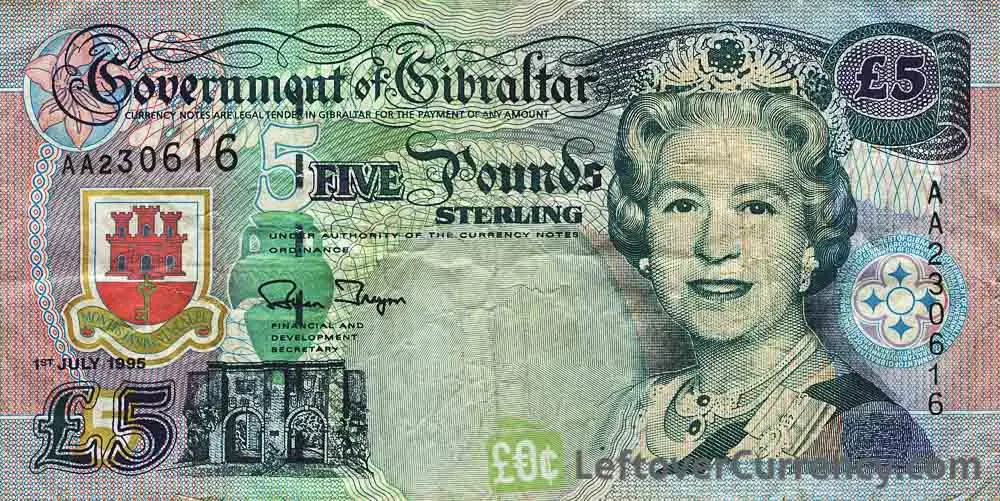
Though only legal tender within Gibraltar’s borders, the GIP boasts unique designs featuring iconic landmarks like the Rock of Gibraltar and the Barbary macaques. Its strength reflects Gibraltar’s thriving economy, fueled by tourism, finance, and online gambling. So, next time you’re sipping a sundowner overlooking the Mediterranean, remember the mighty micro-nations currency, a symbol of its resilience and economic prowess.
- Country of issuance: Switzerland
- Currency code: CHF
- Currency conversion: 1 CHF = 1.04 USD
The Swiss Franc (CHF) reigns as a pillar of stability in the ever-changing landscape of global finance. Ranking as the eighth-strongest currency, its value is anchored by Switzerland’s robust economy, renowned neutrality, and rock-solid financial institutions. Unlike its oil-rich counterparts, Franc’s strength stems from a diversified economy thriving on innovation, precision engineering, and high-quality services. Tourism adds a touch of sparkle, attracting visitors with breathtaking scenery and impeccable hospitality.

But France’s true allure lies in its safe-haven status. When global markets wobble, investors flock to the Franc, seeking refuge in its unwavering stability. This secure haven, however, comes at a cost. A strong Franc can make Swiss exports more expensive, hindering economic growth. Despite this delicate balance, the Swiss Franc remains a cornerstone of global finance, a testament to the nation’s dedication to precision, neutrality, and enduring value. Whether navigating turbulent times or scaling new heights, the Franc stands as a symbol of Swiss resolve, ever steady amidst the swirling winds of the financial world.
Also, read: Top 10 Strategies and Risk Management Methods to Invest in Stocks
9. Euro (EUR)
- Country of issuance: Eurozone
- Currency code: EUR
- Currency conversion: 1 EUR = 1.02 USD
The Euro (EUR), Europe’s powerhouse currency, sits comfortably at number nine on the strongest currency ladder. Though surpassed by oil-backed giants, the Euro commands respect for its sheer scale and stability. Representing nearly 344 million citizens across 19 EU nations, it hums as the lifeblood of a diverse economic engine. While facing recent challenges like the Ukraine war, the Euro’s inherent strength in tourism, and manufacturing, and its role as a global reserve currency keep it afloat. Though not the undisputed champion, the Euro remains a formidable player in the international financial arena, its future intertwined with the ever-evolving European landscape.
10. US Dollar (USD)
- Country of issuance: United States of America
- Currency code: USD
- Currency conversion: 1 USD = 0.96 EUR
The US dollar (USD), often simply called the “buck,” reigns supreme as the world’s tenth strongest currency. Despite not holding the top spot, its influence on the global financial stage is undeniable. Its strength stems from the colossal US economy, bolstered by a robust financial system, diverse industries, and technological prowess. As the world’s reserve currency, it’s the go-to for international trade and finance, making it a stable haven in times of economic uncertainty.
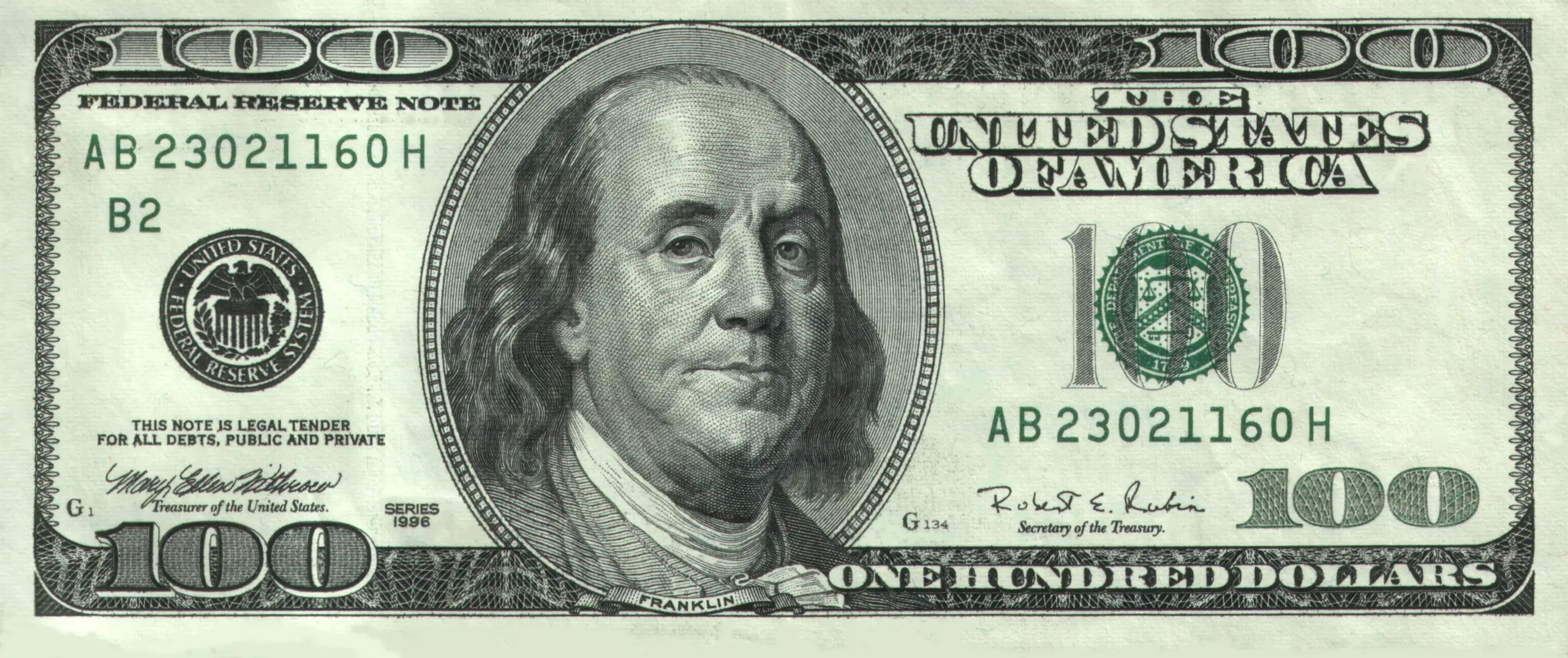
However, the USD’s dominance isn’t without its challenges. A strong dollar can stifle exports by making them more expensive for foreign buyers. Additionally, rising US interest rates can attract foreign investment, potentially weakening other economies. Nonetheless, the USD’s position as a global powerhouse currency is likely to endure for the foreseeable future, making it a force to be reckoned with in the world’s financial landscape.
Also, read: Ten Essential Tips for Achieving Student Loan Debt Relief
FAQs: Highest Currencies in the World
Q. Why is the Kuwaiti dinar the strongest currency?
Kuwait’s massive oil wealth and strong economy support the Kuwaiti dinar, making it highly valuable against weaker currencies.
Q. What factors influence currency strength?
Economic stability, natural resource reserves, oil exports, foreign investment, and interest rates all play a role in currency strength.
Q. Does having the strongest currency always benefit a country?
Not necessarily. A strong currency can make exports more expensive, hindering economic growth. Balanced currency strength with export competitiveness is crucial.
Q. Are there any downsides to using strong currencies?
Travelers to countries with strong currencies may face higher costs, and businesses selling internationally might struggle due to expensive exports.
Q. Will the top 10 highest currencies always remain the same?
No, currency rankings can fluctuate based on economic changes, global events, and central bank policies.
Q. Can I invest in currencies like the Kuwaiti dinar?
Yes, but currency trading involves risk and requires careful research and understanding of the market.
Q. Do all countries on this list have oil-based economies?
While oil plays a significant role for some, countries like Jordan and Switzerland rely on different strengths like political stability, tourism, and financial services.
Q. How does the Euro’s strength compare to individual European currencies?
While the Euro ranks 9th globally, individual European currencies within the Eurozone might have slightly different values due to economic disparities among member countries.
Q. What are some emerging currencies with potential for future growth?
The currencies of rapidly developing economies like China (CNY) and Vietnam (VND) are gaining traction due to their strong economic growth potential.
Q. Where can I find the latest currency exchange rates and news?
Financial websites like Bloomberg, Reuters, and Google Finance offer real-time updates and news on global currencies.












































